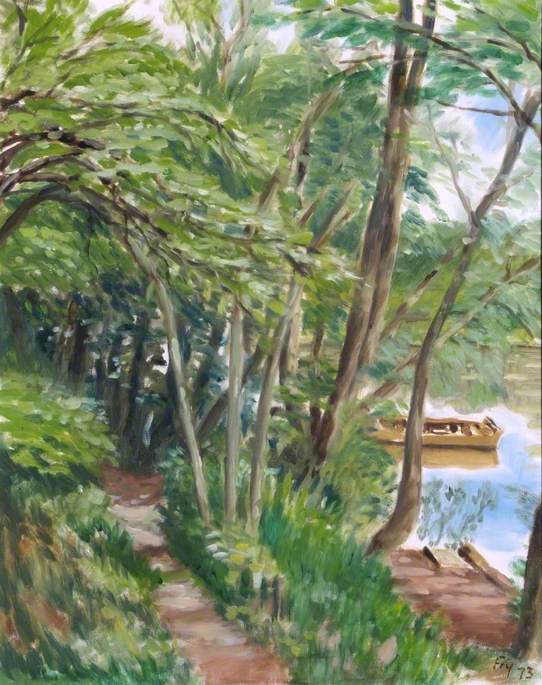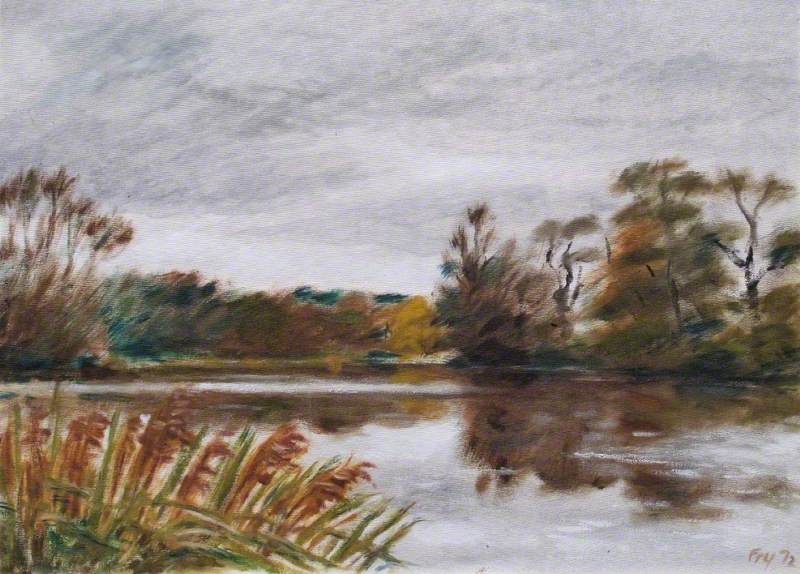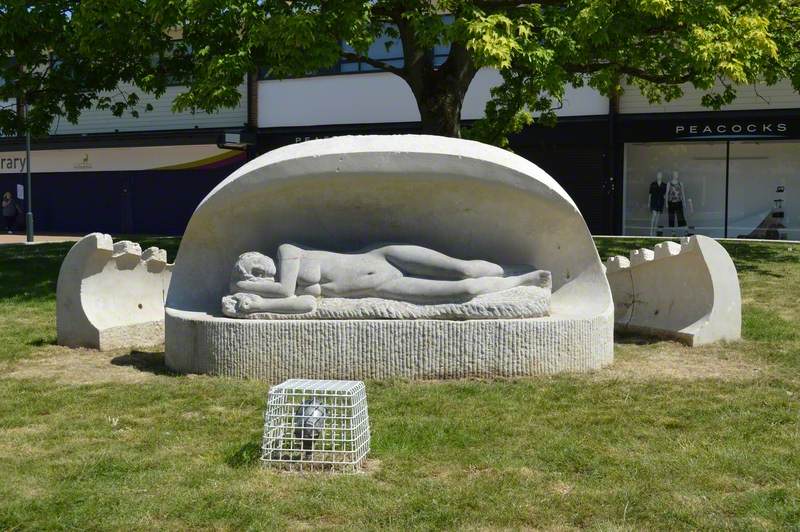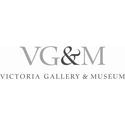Edwin Maxwell Fry [commonly known as E. Maxwell Fry] was born in Wallasey, Cheshire, on 2 August 1899. After serving in the Army from 1918 to 1920, he studied at the School of Architecture, Liverpool University under Charles Herbert Reilly (1874-1948) from 1920 to 1923. From 1925 he worked in the London office of the architects Adams & Thompson, formed by Thomas Adams (1871-1940) and Francis Longstreth Thompson (1899-1970) in 1922, and in 1927 was made a partner in the practice, renamed Adams, Thompson & Fry. During his time with the practice, Fry was co-author, with Adams and Thompson, of a series or local and regional town planning reports.
During the years 1927-1930, Fry was also employed as chief assistant in the Architects Department of Southern Railway in London.
The Adams, Thompson & Fry partnership was dissolved in 1934 and Fry then formed a partnership with Walter Gropius (1883-1969) as Gropius & Fry in 1934. Architectural projects by the partnership included apartments in St. Leonard's Hill, Windsor (1935); Impington Village School in Cambridgeshire (1936); London Film Production Workshops in Denham, Buckinghamshire (1936); a school in Histon, Cambrideshire (1936); and Levy House in Chelsea, London (1936).
The partnership was dissolved in 1936 and the following year Gropius left Britain to take up an appointment as professor of architecture in the Graduate School of Design at Harvard University in Cambridge, Massachusetts,
Fry then worked alone. During World War Two he served with the Royal Engineers in the Department of Fortifications and Works at the War Office in London from 1939 to 1942 and on the Gold Coast in West Africa from 1942 to 1944.
In 1942 he married the architect Jane B. Drew (1911-1996) and after working as town planning adviser in West Africa (1944-46), he and Drew co-founded Fry Drew & Partners in 1946. In 1951 Lindsay Drake and Dennys Lasdun joined the partnership which was known as Fry Drew Drake & Lasdun until 1958. When Frank F. Knight and Norman Creamer joined the the partnership in 1973 the name of the firm changed to Fry Drew Knight & Creamer.
Between 1930 and 1940 Fry's architectural activity was confined to Britain and included a showroom for the Westminster Electricity Supply Corporation in London (1933), several private houses (with Walter Gropius), Impington Village College in Cambridgeshire (with Walter Gropius, 1936), Histon School in Cambridgeshire (with Walter Gropius, 1936), London Film Productions Workshops in Denham, Hertfordshire (with Walter Gropius, 1936), the MARS exhibition at Burlington House, London (with Laszlo Moholy-Nagy, 1937), showrooms for Central London Electricity Limited (1938) and Flats in Ladbroke Grove, London (1940). Between 1946-61 Fry designed a number of buildings in Ghana and Nigeria, including a number of schools and colleges, Broadcasting House for the Nigerian Broadcasting Corporation in Kaduna (1948), the Cooperative Bank of Western Nigeria in Ibadan (1950), British Petroleum Offices in Lagos (1961) and offices for Longmans Green in Lagos (1961).
In 1951 Fry and Drew designed the Waterloo Bridge Entrance and Harbour Bar for the Festival of Britain, South Bank site.
Between 1951 and 1956, Fry and Drew worked with Le Corbusier and Pierre Jeanneret in the design of Chandigarh, India.
Later projects by Fry included the Legislative Assembly building in Port Louis, Mauritius (1966), Mid-Glamorgan Crematorium (1969), and the redevelopment of Hatfield Old Hall in Hatfield, Hertfordshire (1972).
Fry was the author of several books and articles on architecture and town planning and wrote an autobiography - 'Maxwell Fry: Autobiographical Sketches' in 1975.
Fry was elected an Associate of the Royal Institute of British Architects (ARIBA) in 1924 and a Fellow of the Royal Institute of British Architects (FRIBA) in 1939. He was also elected a Fellow of the Royal Town Planning Institute in 1966 and was a member of the MARS Group. He was also made an Honorary Fellow of the American Institute of Architects in 1972. In 1964 he was awarded the RIBA Royal Gold Medal for Architecture. Fry died in Darlington, county Durham on 3 September 1987.
Text source: Art History Research net (AHR net)





